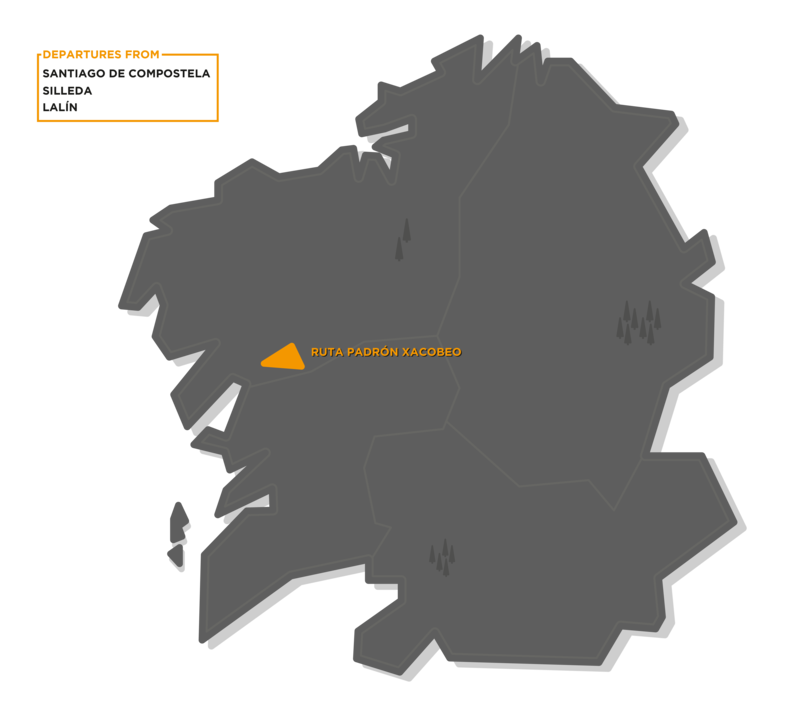Included
Pepper tasting
30 €*
1 - 2 days

Pepper tasting
Before the discovery of the tomb of the Apostle Santiago, Iria Flavia was the bishopric of northern Spain, the origin of which was later transferred to Compostela. It was a place of great importance in Roman times, an important port of embarkation and disembarkation. The remains of the apostle are also said to have arrived here.
It is currently the capital of the municipality, Padrón, the city that gives its name to the famous peppers that come from this area. Although we all call them “Pimiento de Padrón”, their officially certified designation of origin is the “Pemento de Herbón”. We will get to know all of this and many more things on this Xacobeo route from Padron.
According to the historical importance of Iria Flavia in Roman times, according to medieval legend, the place where the boat with the remains of the apostle Santiago arrived was in her port, to be more precise in the Pedrón, a still preserved Roman votive altar. This element is considered to be the founding symbol of the Jacobean tradition.
Padrón, whose name comes from this Pedrón, lies both on the Portuguese Way and on the Pater Sarmiento Route, which follows the steps of the arrival of the Apostle Santiago in Compostela. It is also the final destination of the Camino de la Pedronía, a route that commemorates the landing of the Apostle in these lands.
Although she was born in Santiago de Compostela, Rosalía de Castro spent much of her life in Padrón. Your residence “Casa da Matanza” was preserved as a house museum. She is a fundamental figure in European Romanticism and the rexurdimento of Galician literature in the 19th century and author of the first book to be entirely written in Galician. According to The New York Times newspaper, Rosalía de Castro is “the best poet born on the Iberian Peninsula from the Golden Age to García Lorca”.
However, Rosalía de Castro is not the only figure of enormous relevance in literature, as Iria Flavia is also the birthplace of the emblematic writer and Nobel Prize winner for literature Camilo José Cela, whose remains are buried in the cemetery of the Romanesque collegiate church of Santa María de Iria
But if there is one thing that made the Padrón name known around the world, it is the deliciously flavored little green peppers, the most famous characteristic of which is that some are very hot and some are not.
In fact, the official name with its certified designation of origin is “Pemento de Herbón”, as this is the place name of the municipality from which they actually come. Furthermore, their introduction in Europe is connected with the Franciscan monastery. At the end of this route we can taste these delicious peppers with a good local white wine.
Hand in Hand with the Ría de Arousa, in Padrón we will find the Ulla, one of the most important river basins in Galicia. An important fishing river, which with its natural environment was at other times the economic engine of the area for the lamprey fish. Perhaps not as popular as the paprika shots, the lamprey fish is a delicacy that is compared to caviar, foie or truffle for its exquisite and uniqueness. This peculiar fish is only fished in Galicia in Spain and it is really worth trying.
Departure from Santiago / Silleda / Lalín
| 2 people | 50 €/pax |
| 3 people | 45 €/pax |
| 4 people | 40 €/pax |
| 5 people | 35 €/pax |
| 6 people | 30 €/pax |
| 7-8 people | 30 €/pax |